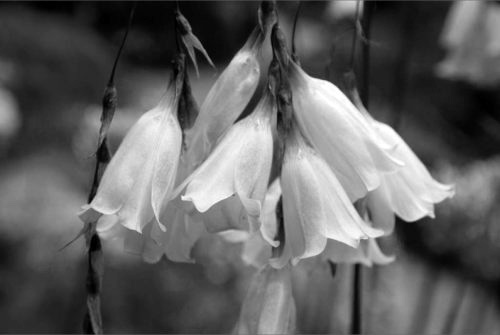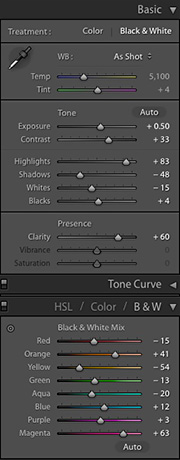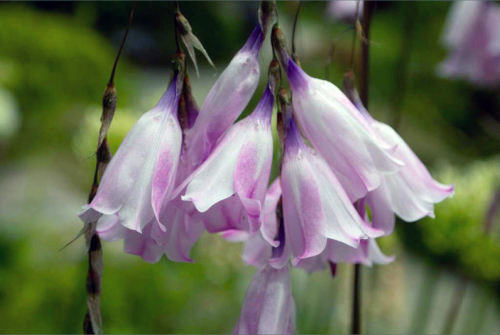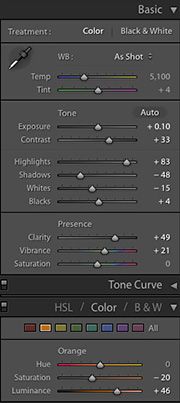Photo Corners headlinesarchivemikepasini.com
![]()
A S C R A P B O O K O F S O L U T I O N S F O R T H E P H O T O G R A P H E R
![]()
Enhancing the enjoyment of taking pictures with news that matters, features that entertain and images that delight. Published frequently.
Should You Edit Every Photo?




1 June 2015
Last week a student in a forum we follow asked a real head scratcher. You'll probably be able to answer it instantly. But it's worth thinking about a little before you do.

His question was simple. Should you (do you have to) edit every photo you take?

Tonal Edits. These are the tonal edits we made to the Raw image.
THE ANSWER
The answer, of course, is, "No."
For one thing, you won't bother even looking twice at a lot of your images, let alone be tempted to edit them. We call them discards. Shots of the floor, for example.
And even if you're a big Instagrammer, you won't filter all the JPEGs you capture on your smartphone.
We'd even bet you probably won't be too anxious to explore the Edit function of Apple Photos or Google Photos to squeeze more image quality out of your camera JPEGs either. It's too much like work.
So not every photo, no.
BUT SOME
But JPEGs aren't the whole game in digital photography (even if they tend to be on smartphones). You can postpone all the processing your camera automatically does to create a JPEG by shooting Raw.
If you capture Raw images, you have to edit your images just to see them.
A Raw file is just data, not an image. Don't be fooled by that JPEG preview. It isn't the whole story.
In fact, you can't see the whole story with a Raw capture. It contains more data than your screen can display at one time. Raw gives you the option of doing profound tonal and and color shifts to an image. So you have to edit the data to decide which part of it to display.

The edits you make to the tone and color data of a Raw file can significantly affect what is displayed. And to demonstrate that, we've presented four treatments here of the same shot:

Color Edits. These are some of the color edits we made to the Raw image.
- The black and white image at the top of this story, displayed as both a camera JPEG and Raw file, shows an optimized camera JPEG and the effect of tonal edits we did in Lightroom (the sliders showing the edit are just below it).
- The color image just above shows an optimized camera JPEG and the effect of color edits we did in Lightroom (the sliders showing the edits are just below).
We've included the sliders to show the human edit involved more than the camera JPEG optimizations typically involve, which typically include Auto Levels and Auto Color Photoshop equivalents and some sharpening. Our A Checklist For Post Processing details our step-by-step process.
So if you're shooting Raw, the answer is, "Yes."
THE QUESTION
Our student wasn't asking about cropping or compositing or any advanced editing tricks. He just wanted to know if a camera image was good enough to go.
The question, though, implies that you can take a photo without editing.
There's never been an image capture that didn't reduce the brightness levels of the world we see (not to mention stumbling all over itself trying to capture a red). And there's never been a print that didn't reduce dynamic range and the color gamut even further.
Tone and color are inevitably edited with every generation.
It's just a question of whether we let the camera do it (with some help from our preferred settings) or we consciously make the edits outselves (using a set of sliders, say).
TWO ANSWERS
Both approaches have merit. It just depends on what you're shooting.
No one would expect a sports photojournalist to tweak several hundred Raw images at halftime. For many years, photojournalists didn't have to concern themselves with color at all, in fact. And today's JPEGs, calibrated to the scene, are ideal for Web and print publication.
The same goes for birthday parties and company picnics. You always want to get the event shots up before Cinderella loses her shoe.
But it's a little different for weddings and landscapes and product shots. As our examples above show, you can make significant changes to what you see (not necessarily improvements but changes). You'll be glad you took the time to dial in the tone and color of those images yourself.
Besides, it's half the fun of digital photography.